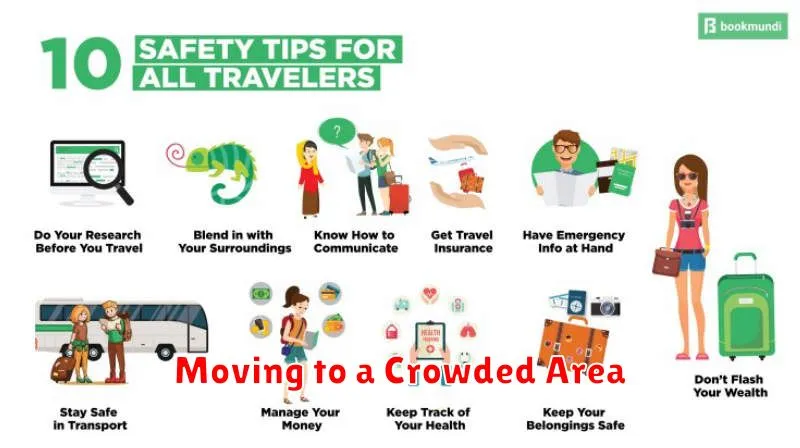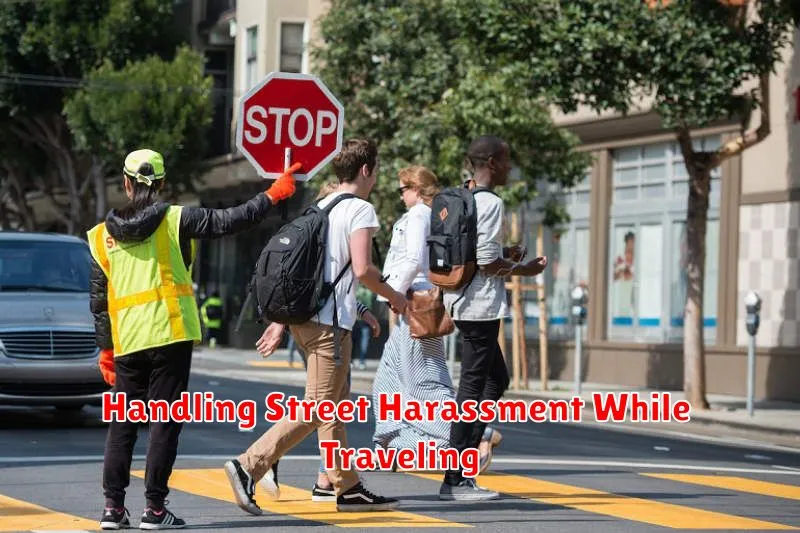Traveling can be an enriching experience, broadening horizons and creating lasting memories. However, street harassment can unfortunately disrupt these positive experiences. For travelers, particularly women, navigating unfamiliar environments can sometimes include facing unwanted attention, comments, or even physical intimidation. This article aims to provide travelers with practical strategies for handling street harassment while abroad, empowering them to stay safe and confident during their journeys. Understanding the local context of street harassment is crucial, as is learning effective techniques for de-escalation and personal safety.
Street harassment, ranging from catcalls to more aggressive forms of intimidation, can significantly impact a traveler’s sense of security and enjoyment. Knowing how to respond to street harassment, both verbally and nonverbally, is essential for navigating these uncomfortable situations. This article will delve into various methods for responding to street harassment, including ignoring, assertive communication, seeking help, and utilizing personal safety apps and tools. Prioritizing your safety and well-being is paramount, and this guide offers practical advice to mitigate the risks associated with street harassment while traveling.
Recognizing the Signs of Harassment
Street harassment can take many forms, making it crucial to recognize the signs. It’s not always overt violence. Unwanted comments, gestures, or actions that make you feel uncomfortable, threatened, or unsafe qualify as harassment.
This can include intrusive staring, following, whistling, catcalling, making sexual remarks or gestures, and unwanted physical contact. Being aware of these behaviors helps you identify harassment and respond appropriately.
Staying Calm and Creating Distance
When confronted with street harassment, prioritizing your safety is paramount. Remaining calm can de-escalate the situation. Avoid engaging with the harasser, as this may prolong the interaction.
Creating physical distance is crucial. Cross the street, enter a shop, or move closer to a group of people. This non-confrontational approach helps ensure your well-being.
Using a Firm Voice or Ignoring
When confronted with street harassment, two common responses are using a firm voice or ignoring the harasser. Ignoring can be effective if the harassment is mild or if engaging feels unsafe. It signals disinterest and can de-escalate the situation. However, it might not work in all cases.
Alternatively, using a firm and assertive voice to tell the harasser to stop can be powerful. A clear “No” or “Leave me alone” communicates your boundaries. Maintain eye contact if it feels safe and deliver your message confidently. This approach may deter further harassment.
Moving to a Crowded Area

If you’re experiencing street harassment, prioritize your safety. Moving to a more populated area can be an effective strategy. A larger crowd can deter harassers and offer potential witnesses or assistance if needed.
Quickly and calmly try to locate a shop, restaurant, or other public space with people present. This creates a safer environment and allows you to de-escalate the situation.
Reporting Incidents to Authorities
Reporting street harassment to local authorities can be important, but the process varies depending on the location. Consider the severity of the incident and your personal safety when deciding whether to report. If you choose to report, try to gather as much information as possible, including descriptions of the perpetrator, the location, and the time of the incident.
Language barriers can be challenging. If possible, find a translator or use a translation app. Keep a record of your report, including any reference or case number provided. While authorities may not always be able to take action, reporting incidents contributes to data collection and may help prevent future occurrences.
Travel Safety Tools for Protection
Personal safety should be a priority while traveling. Carrying certain tools can enhance your security and provide peace of mind. Consider a personal safety alarm to deter potential threats. A whistle can also be effective.
For added security, some travelers opt for pepper spray (check local legality). Keeping a flashlight handy can illuminate dark areas and increase visibility. These tools can help you feel more confident and prepared while exploring new destinations.
Learning Local Support Channels
Researching local support channels before your trip can be invaluable if you experience street harassment.
Identify local police non-emergency numbers, women’s support organizations, and anti-harassment initiatives. Knowing these resources provides practical solutions and empowers you to respond effectively in uncomfortable situations.
If possible, learn basic local phrases related to asking for help or reporting harassment. This can facilitate communication if an incident occurs.

